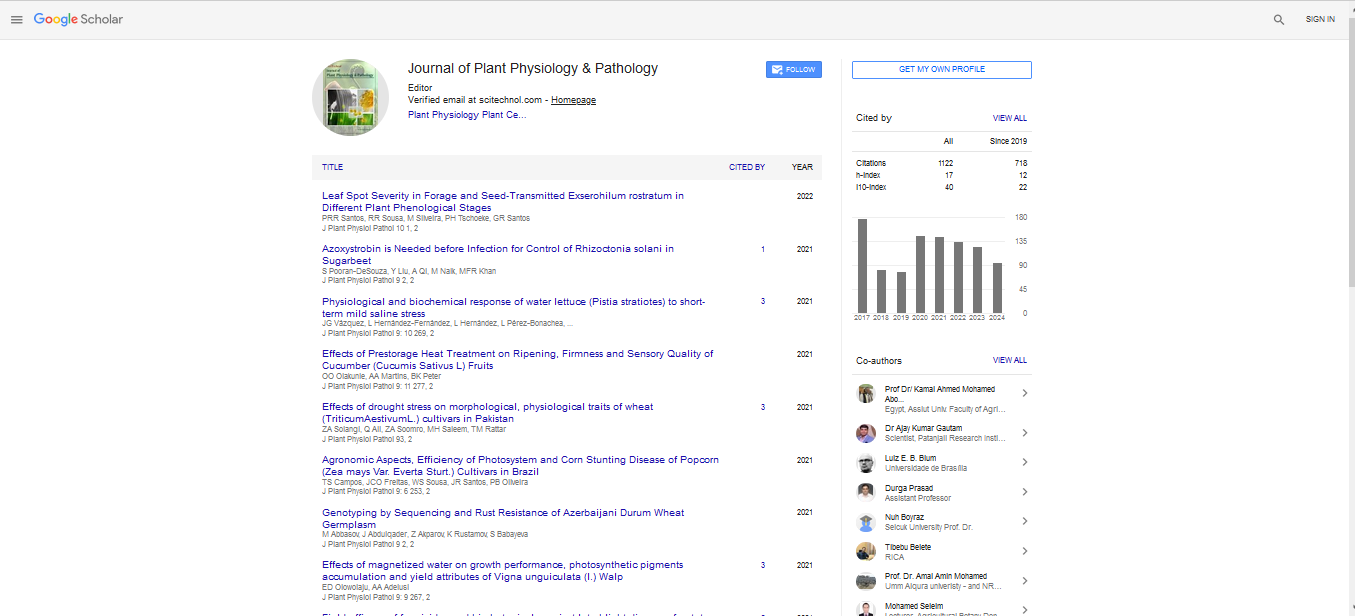Antidandruff property of Psidium guajava leaf extracts
Cheetra Bhajan*, Joyce Soulange Govinden & Vijayanti Mala Ranghoo Sanmukhiya
University of Mauritius, Mauritius.
: J Plant Physiol Pathol
Abstract
Statement of problem: Dandruff, a condition in which patients experience excessive shedding of dead skin cells from their scalps, is a major concern worldwide, particularly from a cosmetic standpoint. Cellular debris usually clumps together, forming white visible flakes on the hair that can land on the face, ears, brows, and shoulders, causing social embarrassment and lowering self-esteem. Various fungicidal products are commercially available. However, the majority of them are synthetic. Chemical products may appear to be the best solution, but they eventually damage the hair roots, resulting in premature hair aging, scalp dryness, split ends, and hair loss. Several studies on scalp microbiomes from different populations have demonstrated a link between dandruff and bacterial and fungal dysbiosis. The guava tree (Psidium guajava Linn.), a member of the Myrtaceae family, is a prolific tropical plant, and Mauritius, being a tropical island, provides ideal growth conditions for the plant. Despite the plant’s widespread biological uses, there is a paucity of data on its therapeutic effect against scalp fungi, which warrants further investigation. As a result, the study aimed to identify the fungal agents of dandruff in a Mauritian population as well as assess the phytochemical composition and efficacy of Mauritian P. guajava leaf extracts against those fungi. Methodology: Fungi were isolated and cultured on Sabouraud dextrose agar (SDA), which contained 2% olive oil, 1% Tween 80, and chloramphenicol. The isolates were identified using physiological, macroscopic, microscopic, biochemical, and molecular techniques. Hydrodistillation and Soxhlet extraction of Mauritian P. guajava leaves were used to obtain essential oil and different solvent fractions, which were then screened for the presence of phytochemicals. The microdilution assay was used to test the antifungal activity of harvested extracts against isolates. Findings: Neurospora intermedia, Trichoderma atroviride, and Trichosporon asahii were identified as fungi. The solvents chloroform, methanol, and hexane produced higher extract yields (16.2%, 15.2% and 14.7%). Phytochemicals were most abundant in the chloroform methanol (4:1 v/v) fraction. The methanol fraction had the highest total phenolic content (TPC), total flavonoid content (TFC), and total tannin content (TTC), with concentrations of 298.27±19.66 g GAE/g, 132.1±6.15 g QUE/g, and 118.53±1.60 g GAE/g, respectively. Conclusion: Isolates were most sensitive to chloroform-methanol (4:1 v/v) and methanol fractions, with a MIC of 1.56 mg/mL. From the study, it can be deduced that P. guajava leaf extracts are effective antifungal agents and potential ingredients for natural antidandruff hair products, which are in high demand in the cosmetic industry.
Biography
Cheetra Bhajan holds a BSc(Hons) in Applied Biochemistry and is currently pursuing her MPhil/PhD at the University of Mauritius. Her research focuses on the nutritional and sweetening potential of endemic Mauritian fruits.
 Spanish
Spanish  Chinese
Chinese  Russian
Russian  German
German  French
French  Japanese
Japanese  Portuguese
Portuguese  Hindi
Hindi 
